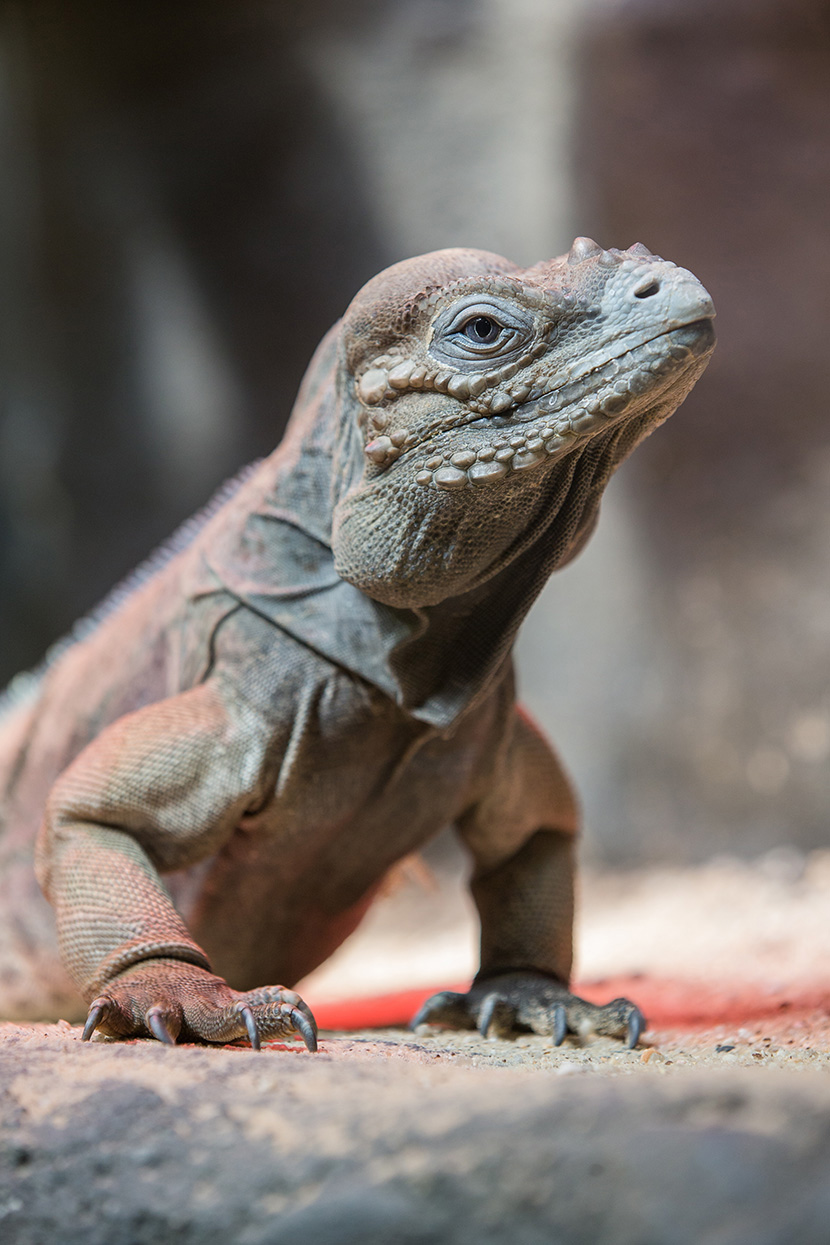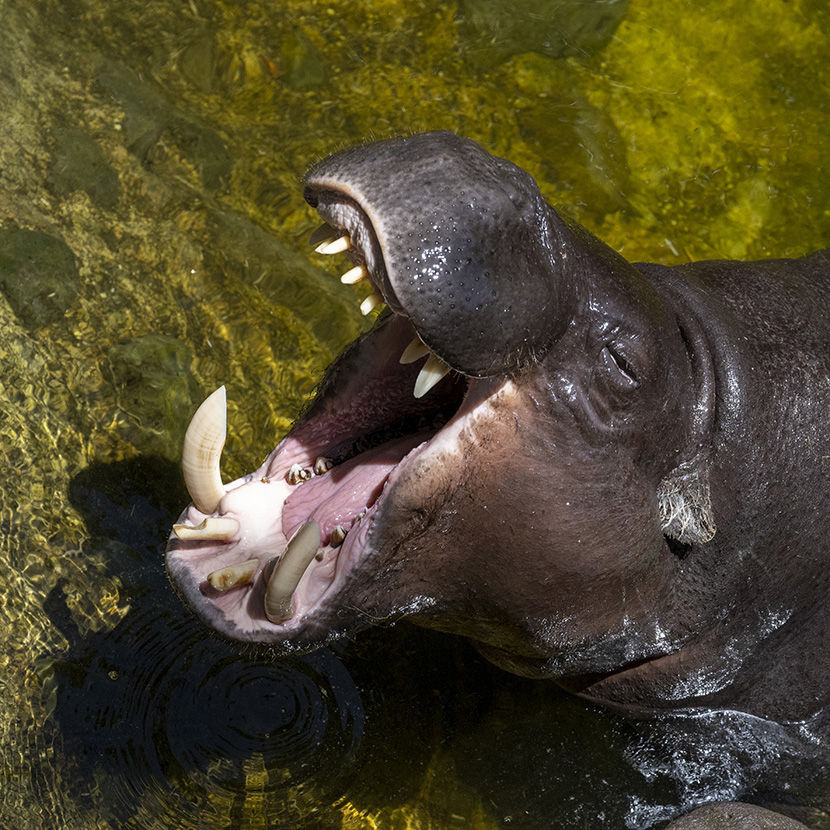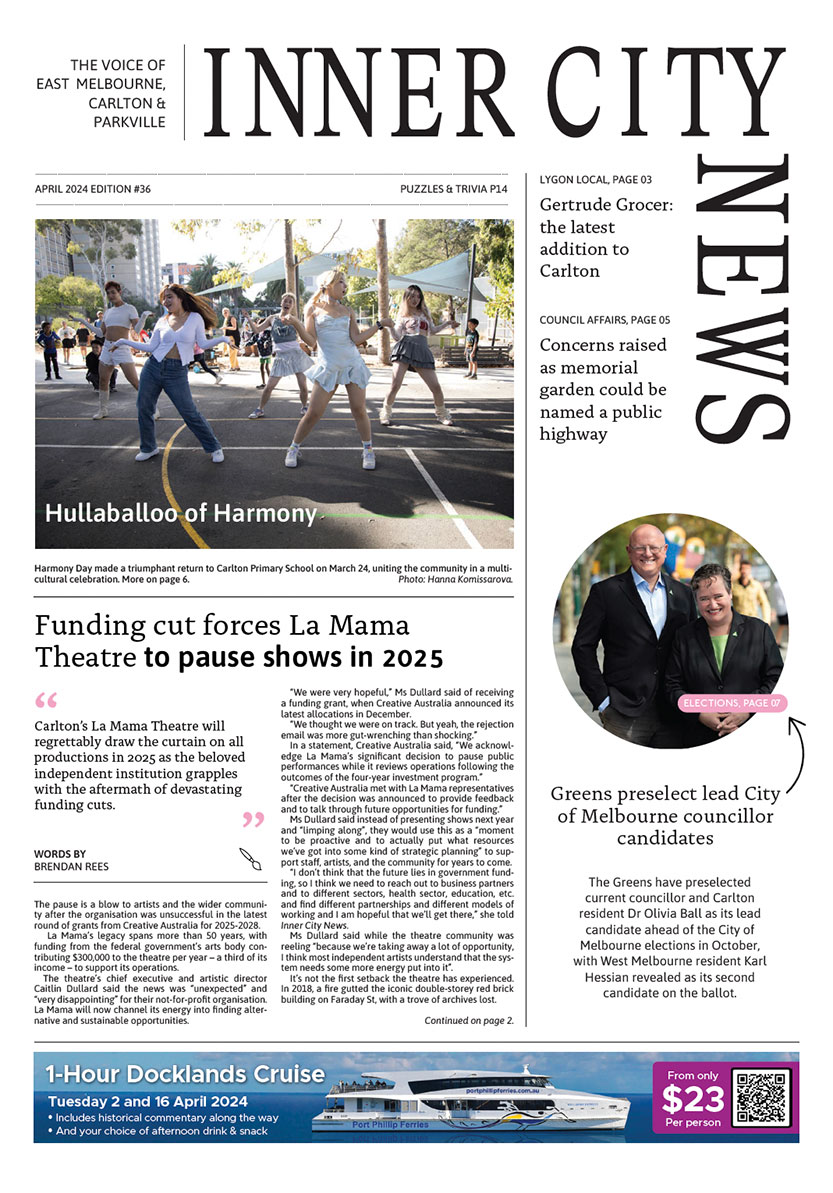Melbourne Zoo residents keep cosy through winter
As Melburnians shiver through the coldest months of the year, some of Melbourne Zoo’s quirkiest residents have taken a novel approach to beating the winter chill.
Fifteen-year-old Pygmy Hippopotamus, Felix, has been dipping into his heated swimming pool that sits at around 23°C in the chillier months.
Melbourne Zoo carnivores and ungulates keeper Kristen Mitsios said that as an African animal, Felix loved nothing more than a morning splash when the mercury dropped in Melbourne.
“We find Felix in the pool almost every morning in winter,” Ms Mitsios said. “He’ll often dip under the water for a bit, and when he pops his head above the surface on really cold mornings, you can see the steam coming out from his nose.”
Ms Mitsios said Felix’s morning swims were not only a great way for him to stay warm but provided him with multiple health benefits as well.
“Swimming in the pool is a great way for him to regulate his body temperature, and it’s also really important for him to be in the water because he is a semi-aquatic animal. So, it’s good for his skin and it’s great exercise as well.”
Ms Mitsios said Felix loved the pool so much that keepers would often place enrichment items, like puzzle feeders and food, on top of the water so that he could use his whole body to forage, eat and play.
“He’s an incredibly food-motivated herbivore, and he is very responsive to the training exercises we conduct with him on a daily basis,” Ms Mitsios said.
As a Pygmy Hippopotamus, Felix weighs in at a modest 260kg, compared to the Common Hippopotamuses found at Werribee Open Range Zoo that typically weigh about 1500kg.
Pygmy Hippos are native to the forests and swamps of Western Africa, but populations in the wild are declining due to human threats, such as habitat loss, mining and hunting.
Roughly 6000km across the Atlantic Ocean from the westernmost point of Africa in Senegal is the island of Hispaniola, where Haiti and the Dominican Republic share a border, and is home to an array of weird and wonderful lizards, including the Rhinoceros Iguana.
While many reptiles slow down during winter, Melbourne Zoo’s Rhinoceros Iguanas, Cornelius and Juanita, made the journey into their new home within the zoo’s iconic Reptile House.
Melbourne Zoo ectotherms keeper Ryan Moes said the exhibit had been specially designed to promote exercise, training and overall healthcare opportunities for the endangered lizards.
“The new Rhino Iguana exhibit here in the Reptile House has a lot of features that gives us even more training opportunities with them,” Mr Moes said. “It also provides the lizards more space to climb and bask in the warmth and exhibit their natural behaviours.”
The new space has been designed to provide the Iguanas with a dual climate that allows them the choice to move between a drier desert-like area and a more tropical, rainforest zone.
“In the wild, Rhino Iguanas are found in many different habitat types, from tropical broadleaf forest, right down to arid coastline,” Mr Moes said. “So, the space we’ve built for them here has a mosaic of temperatures that the lizards can move throughout as they choose.”
As a primarily herbivorous species, Rhino Iguanas are fed a mixture of leafy greens and flowers.
Populations of Rhinoceros Iguanas are declining in the wild and are classified as endangered due to threats of poaching for food and the pet trade, and habitat destruction for charcoal production and tourist development.
Zoos Victoria members and Melbourne Zoo visitors are reminded that all tickets must be pre-booked online at zoo.org.au.

Carlton language school championed by Ukrainian refugee






 Download the Latest Edition
Download the Latest Edition